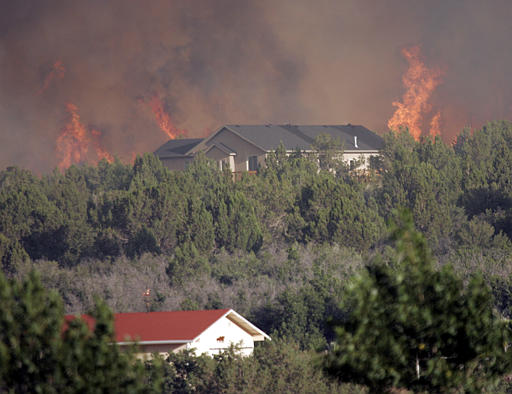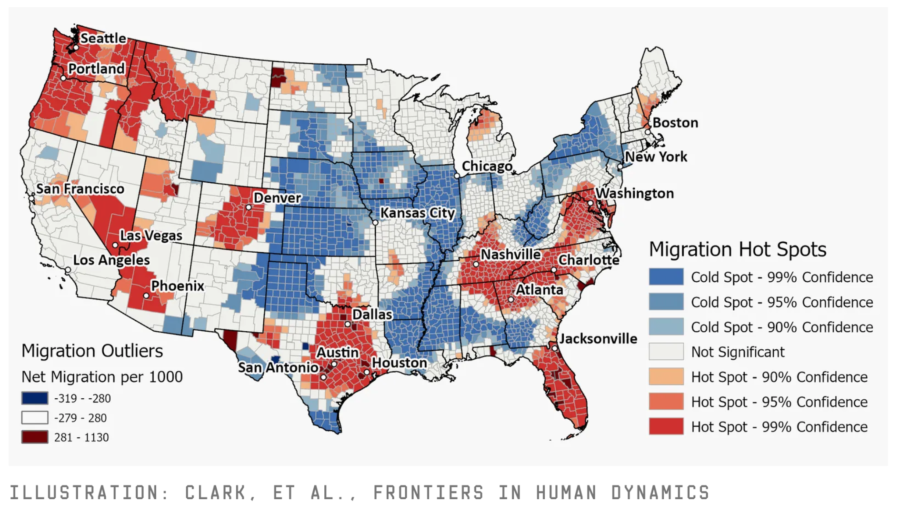In Boulder, Colorado, Democratic State Rep. Judy Amabile says people are having difficulty finding affordable home insurance. “It seems like across broad areas certain companies have decided we are not going to insure in this area,” she told 9News-TV. “They are having to make a lot of calls and the prices have gone up a lot and they are having difficulty finding anything.”
Amabile plans to introduce legislation to create a “last-resort” insurance plan provided by the state of Colorado. “The plans on that program are going to be really bare-bones and they are going to be very expensive.” She said at least 30 other states now have last-resort homeowners’ insurance programs like this, as more companies are increasing rates or even refusing to insure wildland/interface homeowners at all.
“Across the board, we are seeing 20 to up to 50 percent increases in renewals,” said independent insurance agent Morgan Lloyd.
Homeowners have moved into and built homes in wildland/urban interface areas for decades with little regard for the multiplying fire risk (and evacuation dangers) posed by increased development and neglected fire-safety mitigation. In some areas of the West, homeowners (along with homeowners’ associations, insurance companies, and local governments) are now facing the realities of paying for this development. NBC Los Angeles reported that more and more homeowners in southern California are being dropped by insurance companies because of wildfire risk. They talked with homeowners near Pomona whose insurance companies canceled their policies even though no wildfires have burned near their homes for years. Others’ premiums increased by 800 percent.

The Insurance Journal reported last month that California, Florida, and Texas are the states with the highest number of homes at risk of wildfire, but that other states also are faced with large and increasing risk. Colorado and New Mexico, for example, have fewer homes overall, but project fires can wreak tragedy on a much larger proportion of their populations. New Mexico’s Santa Fe County counts nearly 34,000 properties at risk of wildfire, but the county housed a population of only 155,000 in 2020. This ratio of vulnerable homes to the overall population underscores the magnitude of population displacement assistance, reconstruction resources, and economic recovery expense required after a major wildfire.
With wildfire danger threatening the liquidity and solvency of insurers, the California Department of Insurance has proposed new regulations to incentivize risk reduction on covered properties and neighborhoods. In October, the state Insurance Department issued regulations to recognize and reward wildfire safety and mitigation efforts by homeowners and businesses. The InsuranceNewsNet reported that California’s “Mitigation in rating plans and wildfire risk models” regulation is the first in the nation requiring insurance companies to provide homeowner discounts under the “Safer from Wildfires framework,” which the California Department of Insurance and state emergency preparedness agencies created last year. The regulation requires insurance companies to submit new rate filings incorporating wildfire safety standards. The new rates must recognize the benefit of safety measures such as upgraded roofs and windows, defensible space, and community programs such as Firewise USA and the Fire Risk Reduction Community designation developed by CAL-FIRE.
::: UPDATE: Highway to the Danger Zone :::
Matt Simon recently wrote an eye-opening piece for WIRED about a study examining numbers of residents moving into and out of fire danger zones (and hurricane regions) across the country. Wildfires in the West have grown increasingly devastating in part because of climate change, but also because more humans are moving deeper into areas that once were intact or contiguous forests. That overlap between development and wildlands, Simon noted, now exposes more people to fires and provides more opportunities to ignite them.

Americans are “flocking to fire,” say the authors of a study published last month in the journal Frontiers in Human Dynamics. Using census data, the researchers found that people are increasingly moving to areas that are more prone to catastrophic wildfires or plagued by extreme heat. And though some affluent Americans are seeking the beauty of forested areas, economic pressures are forcing others there, too: Skyrocketing housing prices and cost of living are pushing people toward more rural places where homes are cheaper.
“As temperatures increase — as things get drier and hotter and prices for housing get more unaffordable — it’s definitely going to push people into these rural areas,” says Kaitlyn Trudeau, a data analyst at the nonprofit Climate Central. “Some people don’t have a choice.”
Increases in the number of people living in wildfire zones come at a huge cost: the 2018 Camp Fire that destroyed Paradise, California, resulted in an estimated $16.5 billion in losses.
